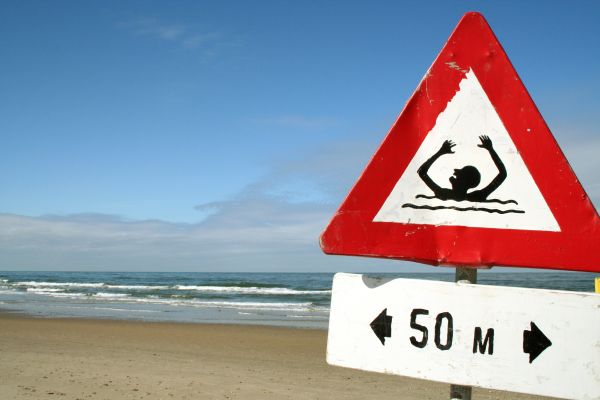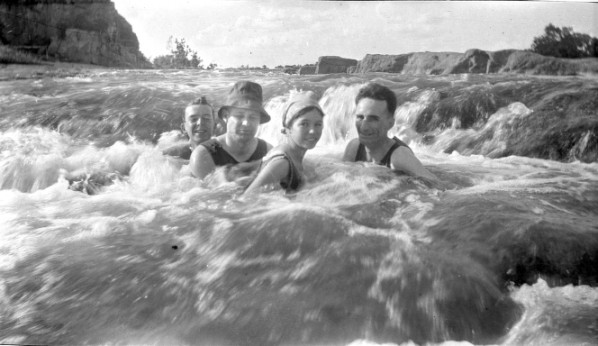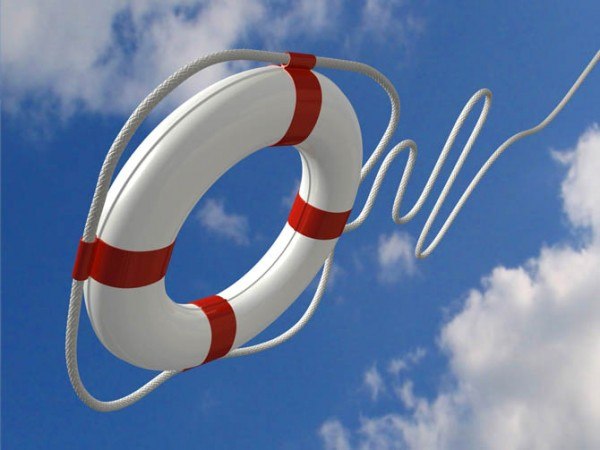“You drown not by falling into a river, but by staying submerged in it.” – Paulo Coelho
Drowning is the third most common cause of accidental deaths in the US and the number one cause of deaths in national parks. People tend to panic when they fall into water, which leads them to mentally sabotage themselves out of getting to safety. Without quick thinking, you can’t necessarily rely on others to rescue you, especially if you are alone. The best way to prevent yourself from drowning is learning how to save yourself from drowning.
Preventative Measures
 Males between 15-25 years old account for a large portion of deaths by drowning.
Males between 15-25 years old account for a large portion of deaths by drowning.
Whenever you’re participating in water sports such as whitewater rafting, wake boarding, kayaking, canoeing, or any other activity where the water is choppy, fast, or deep, it’s always best to wear a life jacket. If you’re out on a hike along a river, carry a walking stick or trekking pole. The people who end up drowning are children 5 years and younger or 15-25-year-old males who are hanging out at beaches, lakes, and rivers; their brawns mixed with alcohol and/or drugs usually lead to their demise.
Also, the best way to prevent drowning is to learn how to swim. Nobody is too old to learn. If you feel like you are not progressing with your instructor, find a different one who has a different technique. Everyone learns differently and having someone boost your confidence really helps.
Falling Out of a Boat
 If you’re whitewater rafting it’s best to do if you fall in.
If you’re whitewater rafting it’s best to do if you fall in.
Whether you’re rafting or boating, after you fall out of a boat, tighten your life jacket after you grab a breath of air. Jackets can loosen up from physical activity such as paddling. Especially if you’re going downriver, roll onto your back with your feet pointed downstream and paddle with your arms to avoid running into any rocks or boulders. Wave both arms up and down to signal for help and yell if you can.
Make sure to grab what people throw to you (rope, buoy, life saver, paddle, etc.). In the meantime, make sure to time your breathing for when the water splashes over you; inhale when you surface and don’t panic. It’s easier to get yourself out of a bad situation by having your head on straight.
Crossing a River
A river is the next obstacle on your trek, assess whether or not it’s safe to cross first. To gauge how fast the current is flowing, toss a stick into the water. If the stick moves faster than you can walk, the current is too strong to cross safely.
If you must cross a raging river, find a sturdy, sizeable walking stick or use a trekking pole to stabilize yourself when crossing. If you fall in, use your pack as a floatation device and point your feet downriver to guide you from crashing into objects. If you have a group, go against the stream with the strongest person in front holding the trekking pole or stick. Then the next strongest holds onto the hip belt behind the first and so on. Use this method to go against the current in a slight diagonal.
Head for the Eddies, Avoid the Rapids
 These folks headed for the eddies, look how happy they are to be there.
These folks headed for the eddies, look how happy they are to be there.
When Lady Luck is not looking your way and you fall out of a boat or slip crossing a river, try to guide yourself to the eddies, the area behind rocks where the water flow is slower. You’ll be able to get back up easier and get out of the river. Do not cross in front of a boulder as the current moves quicker here.
If you are stuck in a current, swim under it and out of the area. Trying to get out over the water is much harder and you’ll most likely continue to get stuck there. Rapids show where the current is the fast so avoid these and any “V” formation in the water where logs are jammed together or undercut banks.
Waterfalls
 Getting stuck in the boil line can be fatal.
Getting stuck in the boil line can be fatal.
All rivers end up with a waterfall somewhere. If you are following a river to safety, it’s better to rappel down a waterfall if you have climbing gear. If you don’t have gear, look for healthy trees near the cliffside to climb down. It’s important that you keep an eye on each step you take downwards as the branches may break under your weight.
If, rather than following the river, you’re stuck in it, try your best to swim to the edge of the river before you reach the edge and drop over. Plunging down the waterfall can be extremely hazardous contrary to Hollywood examples of the protagonist miraculously diving down and surfacing easily. People can get caught under the “boil line” where the water bubbles up and get sucked under.
Take a breath before you flow over the edge with your feet first. Once you are in free fall mode, wrap your arms around your head with your nose in the crook of your elbow and position your body as if you are doing a cannonball. As soon as you surface, swim as quickly as you can downstream to where the water is more calm and easier to get out of.
Save a Friend
 If your pal falls in be careful not to put yourself in the same position.
If your pal falls in be careful not to put yourself in the same position.
If you see someone fall into water and they are unable to get themselves out, use a pole or long stick to reach out to them after securing yourself to something else. If you are unable to reach them this way, tie a rope to a floating object such as a sleeping pad and throw it to them, hanging on to the other end of the rope. As a last result, go in to save them if you are a strong swimmer and confident that you’ll be able to bring them to safety. If not, call for help and try to guide this person to safety.
Falling into water abruptly is always a surprising and shocking experience. In order to get out of this situation, it really is mind over matter, so tell yourself to stay calm and trying to think clearly and quickly about how to save yourself. Many people are in shock that they stay where they are and don’t move. Be confident in what you are doing and move with purpose.
The author of this article is Erin Tran. If you enjoyed this piece you can follow me on Twitter @CustParadigm. When I’m not learning about wilderness survival tactics I can usually be found enjoying a day on the river whitewater rafting. Colorado is my favourite place for rafting, hiking or camping with my dog in the mountains.


